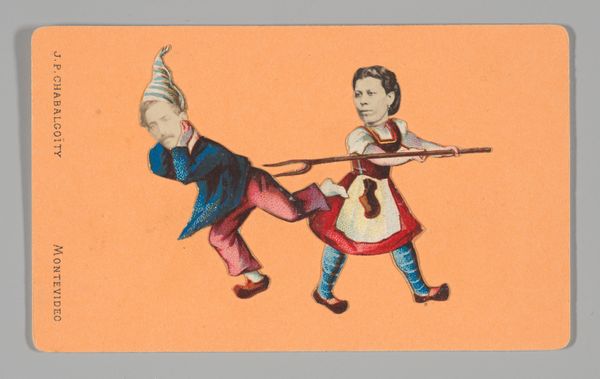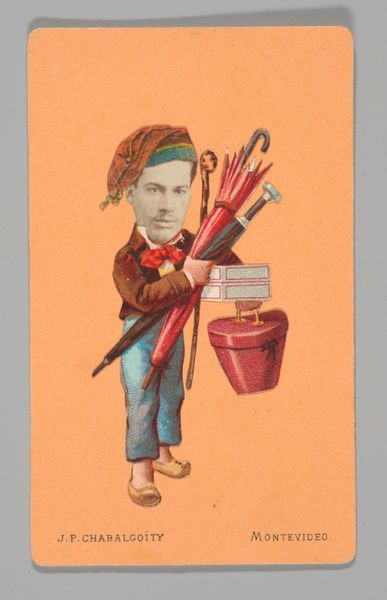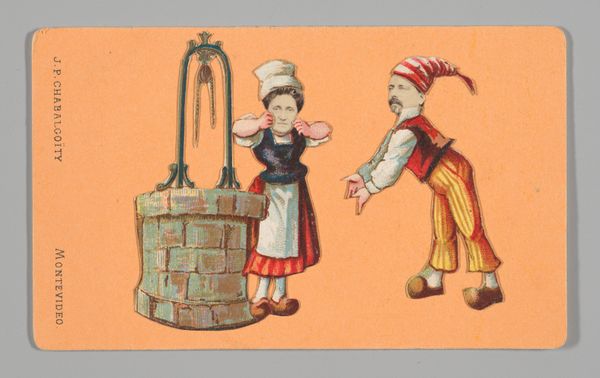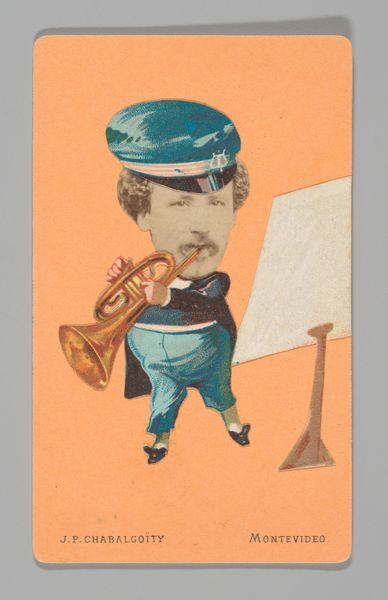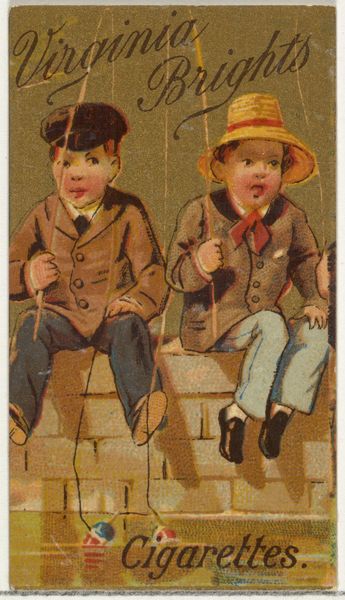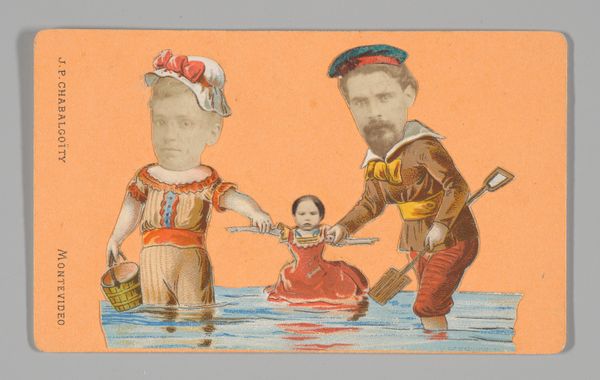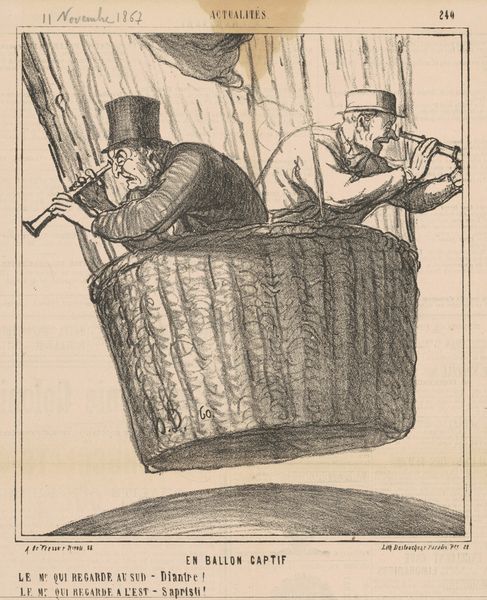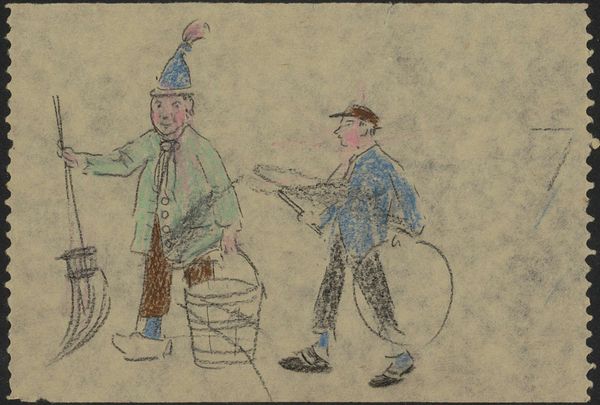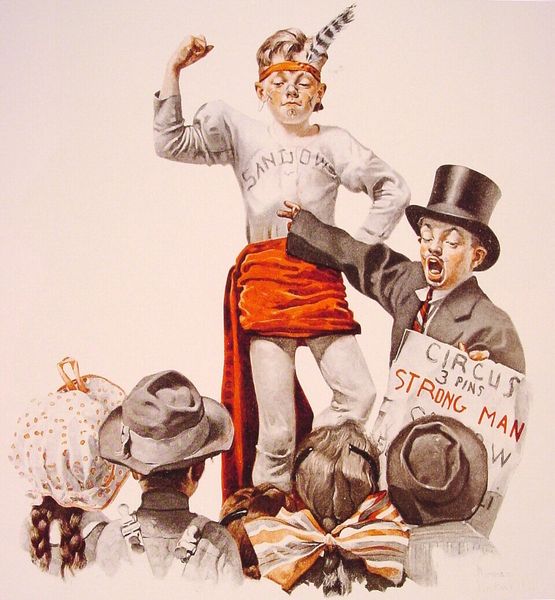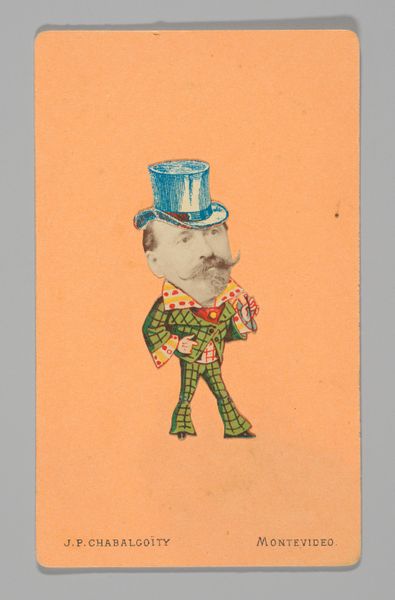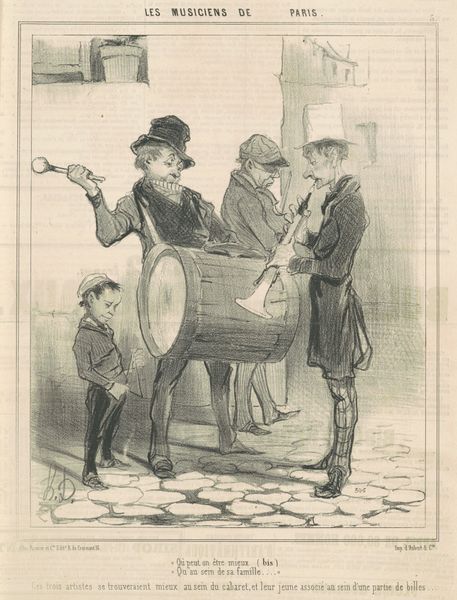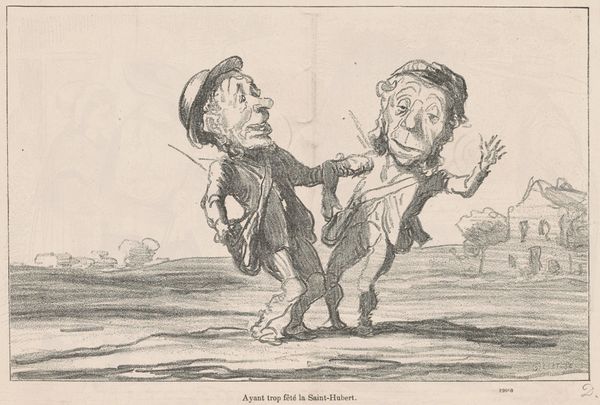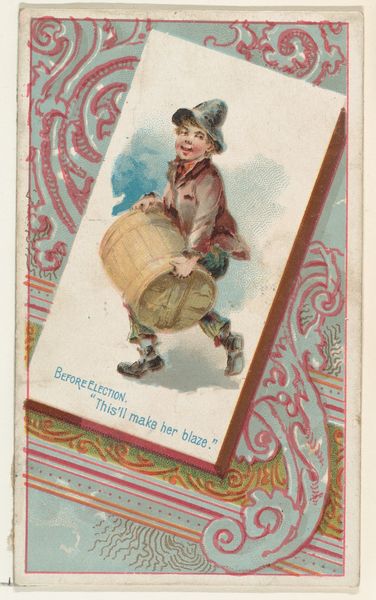![[Photo Collage: Two Men with Mop and Water Bucket] by Juan Pedro Chabalgoity](/_next/image?url=https%3A%2F%2Fd2w8kbdekdi1gv.cloudfront.net%2FeyJidWNrZXQiOiAiYXJ0ZXJhLWltYWdlcy1idWNrZXQiLCAia2V5IjogImFydHdvcmtzLzY4YTM5OWQxLWEwMTEtNDY4MS1hOGUzLTBjMmE3OTkzYzYwYS82OGEzOTlkMS1hMDExLTQ2ODEtYThlMy0wYzJhNzk5M2M2MGFfZnVsbC5qcGciLCAiZWRpdHMiOiB7InJlc2l6ZSI6IHsid2lkdGgiOiAxOTIwLCAiaGVpZ2h0IjogMTkyMCwgImZpdCI6ICJpbnNpZGUifX19&w=3840&q=75)
[Photo Collage: Two Men with Mop and Water Bucket] 1870 - 1880
0:00
0:00
collage, photography
#
portrait
#
collage
#
caricature
#
photography
Dimensions: Mount: 10.5 x 6.3 cm
Copyright: Public Domain
Editor: So, this is “[Photo Collage: Two Men with Mop and Water Bucket]” by Juan Pedro Chabalgoity, from the 1870s or 1880s. It's a photographic collage of two figures doing… well, what seems like cleaning? I'm struck by the almost satirical feel. What's your read on it? Curator: It’s intriguing, isn’t it? I see a commentary on labor and perhaps social class, filtered through a caricatured lens. The use of collage in this period is quite pointed, almost like a protest against conventional portraiture. How does the artist subvert expectations about identity? Editor: I guess by exaggerating features, making them almost clownish, while placing them in working-class garb? It’s a strange juxtaposition. Curator: Exactly. Think about who had access to photography and portraiture at that time. Was this perhaps poking fun at the elite, or perhaps highlighting the plight of the working class? The specific tools and uniforms these figures wear—they speak to particular kinds of labor and likely carried certain social meanings in the context of Montevideo at the time. Editor: So the exaggerated style isn’t just humorous; it's also a commentary. It kind of reminds me of political cartoons… Curator: Precisely! We must consider how photography intersected with the existing traditions of caricature and political satire. The image challenges viewers to consider how different social groups are represented, and who has the power to represent them. What kind of audience was the artist imagining for it? Editor: It does make me wonder about the artist's own position – were they part of that working class, or observing from a distance? Curator: That's the key question, isn't it? Understanding Chabalgoity’s social position would give us a deeper understanding of the collage’s message. Editor: I'll definitely look more into the history of photography and labor representation in Uruguay after this! Curator: Excellent! By engaging with this intersectional history, we can begin to unlock the artwork’s nuanced layers of meaning and consider its legacy within a larger global context.
Comments
No comments
Be the first to comment and join the conversation on the ultimate creative platform.
